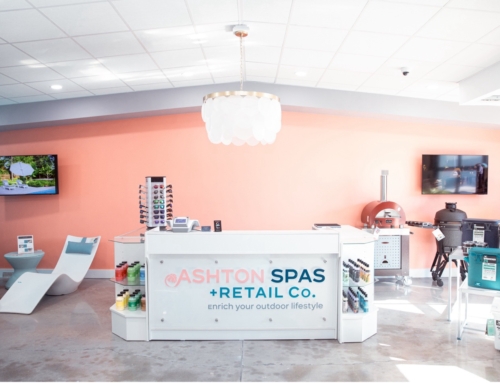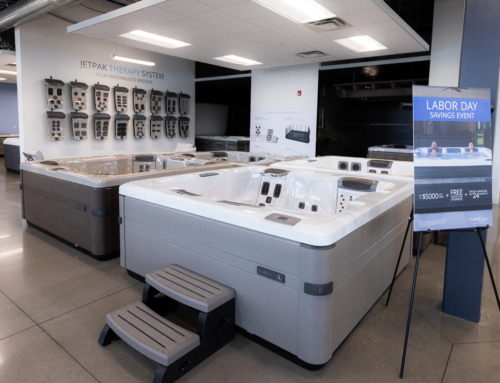Is your spa business still working with a register and managing inventory by eye and hand? When was the last time you evaluated your point-of-sale system? With current advancements in POS technology, you might benefit from updating to your current system or even upgrading to a new one.
Simply put, a point-of-sale-system is where customers pay for your goods and/or services. But modern point-of-sale systems are much more than just a network linking multiple registers to see how much you sell on a day-to-day basis. They allow you to monitor nearly every aspect of your business in one convenient system. How do you know if it’s time to update your POS or how to choose a new one? Keep reading.
Reasons to Update Your POS
Often, retailers ‘make do’ with inadequate point-of-sale systems because of the cost of updating current systems and purchasing new ones. Some fear the time it could take to change systems and the frustration of training employees to use the new system. It turns out that updating a POS system can actually reduce costs in the long run and are often easy to integrate.
Experts and industry veterans recommend going through the upgrade evaluation process every three to five years.
To decide if it’s the right time for upgrade, take a look at whether or not you have capabilities that are not being met by your current system. This includes processing time and any recurring errors or malfunctions you experience with your current POS. Evaluating the upgrade before a malfunction occurs can save you time not to mention the headache and angst that come with surprise disruptions. Experts and industry veterans recommend going through the process every three to five years.
If any of the issues below apply to your system, you need to think about making a change:
- It can’t track inventory from multiple stores in one location.
- It doesn’t update data in real time.
- The online and offline channels operate separately.
- It can’t handle growing inventory levels/inventory counts are unreliable.
- It doesn’t give you access to the right data.
- It doesn’t provide detailed reports, report comparisons or enough filter options.
- It doesn’t connect with your current accounting systems.
- It lacks sufficient user rights.
- It isn’t cloud-based.
- Business and consumer data are vulnerable to attack.
Choosing a New POS System
Your point-of-sale system is the hub of your business where consumers exchange money for goods or services. As you consider updating your current system, it’s important to consider both the software and the hardware components of potential new systems. There are two software deployment options:
On-Premise: You purchase licenses for the software and install it yourself. It’s your responsibility to maintain and update the software.
Cloud-Based: Access and support for cloud-based systems occur over the internet. Known commonly as Software-as-a-Service (SaaS) solutions, these systems work offline and sync data when back online.
Both on-premise and cloud-based deployment require the same hardware. When you’re looking for a new POS system, make sure it includes these hardware components:
- Register Screen – standard and/or iPad/tablet compatible
- Barcode Scanner – for automation and inventory tracking
- Credit Card Reader – secure and EMV compliant to avoid fraud liability
- Receipt Printer – hard copy, email and text receipt options
- Cash Drawer – yes, people still pay with cash
Beyond these basic POS requirements, many systems offer additional benefits, such as inventory management, sales reporting, employee management, and customer management. Mobility is also important for parking lot sales, trade shows, and other off-site events, and you’ll want to make sure new systems offer integration with existing business applications.
Options to Consider
Before choosing POS software, it help to start by building a list of features you’re looking for that your current system doesn’t have and another with capabilities your current system has that you rely on. Once you have these key characteristics identified, the next step is choosing who to get them from.
There are literally hundreds of retail point-of-sale systems available. The one you choose will depend on the size of your store, the number of locations and a host of other considerations. Of course, priorities should include industry experience (have/will they be around for a while) and responsive service.
When choosing the right POS system for your store, take advantage of free trial periods and free demos to get a real feel for which solution is best for your business needs.
After looking at 13 separate lists of top rated POS systems for 2018, three systems placed consistently among the top 20: Square, LightSpeed Retail, and Erply. Here is a comparison of those systems.
1. Square
For small retailers, Square gets high marks from businesses ranging from pop-ups to mom-and-pop retail stores. It’s user-friendly and offers Cloud, SaaS, and web-based deployment options as well as mobile capability in both Android and iOS platforms. Square POS has these features:
- Inventory management: Real-time inventory tracking with stock alerts and downloadable reports, accessible from anywhere
- Integrated payment processing: Accepts cash, checks, cards, and gift cards
- Security: Payment info is encrypted upon receipt, transactions are monitored for suspicious behavior, and adheres to PCI Data Security Standard (PCI-DSS)
- Sales tracking: Square Analytics allows you to track sales data in real time over multiple locations
Square POS integrates with numerous accounting and other apps like QuickBooks and Vend from the Square App Marketplace. It also lets you customize the application platform interface (API) to create a POS that matches your business needs. It’s considered one of the best POS systems for boutiques and small retailers. It’s important to note that Square offers support only during business hours and training is only in documentation form.
2. LightSpeed Retail
LightSpeed Retail is for retailers who have a large inventory, stores with up to 20 employees and stores with multiple locations. It includes these features:
- Inventory management: Import/export, work orders, special orders, purchase orders
- Reporting and analytics: Real-time data tracking, inventory tracking, accounting, remote reporting
- Mobility and cloud access: Mobile inventory, personalized branding, employee training
- Multiple store management: Centralized purchasing, centralized customer data, detailed reports
- Payment integration: Mobile, cash, cards, refunds
- CRM: Customer sales history, customer accounts, customer types, customer lifetime value
LightSpeed is omnichannel compatible, comes with 24/7 live support, and offers training in-person, live online, via webinar and through documentation. Setup takes a bit more time than Square, but the wealth of features makes it worth it.
3. Erply
Erply is a cloud-based system suitable for small and medium-sized retailers. It has a windows operating system that works online and offline with touchscreen, keyboard, and mouse capability. You can easily set up the receipt printer, cash drawer, and customer display by simply connecting to the computer and turning them on.
Along with automatic software updates and an automatic setup wizard, Erply offers:
- Inventory management: Supplier database, automated restock levels and reorder criteria
- CRM: Sales history, store credit, email, loyalty programs, customer database
- Promotional campaign management: Built-in email, web browser, social media
- Multi-register, multi-store capability: Regional price lists, multi-tax rate support, comparison reports
- Sales tracking: Reports by product, by day, by customer, comparison for locations and date ranges
- Purchase reports: Creation, tracking, reporting, stock replenishment reports
It also provides integration with Erply accounting, mobile payment processing with PayPal, Import/Export with Shopify, Export reports to Quickbooks, and a Retail Optimizer for sales forecasting and inventory management.
Erply’s open API allows integrating with any program you need for your business, and it’s compatible with iPads, tablets, desktops, laptops, and touchscreen terminals with minimal hardware requirements. The system is easy to set up, and Erply offers 24/7 live support along with live online training, in-person training, training via webinar, and training through documentation.
What to Do Next
The three systems outlined above are all created for retail businesses in general. Some systems are created specifically for boutiques, restaurants, hospitality, and there are even a few created specifically for the spa industry.
Take this information and reach out to other spa retailers for advice, create a “must-have” list, research popular systems (Capterra has a great compare feature that lets you see how different systems measure up side-by-side), and start talking to vendors. When choosing the right POS system for your store, take advantage of free trial periods and free demos to get a real feel for which solution is best for your business needs.









I like how you mentioned finding a list of features that is better than the current system. My brother has a startup burger shop and is needing to upgrade his point of sale system to make things more efficient. I’ll be sure to share this with him so he can make a list of features he needs for an upgrade.
This is awesome. I now know which POS system is best and what features should be there to run my cafe. Thank a lot